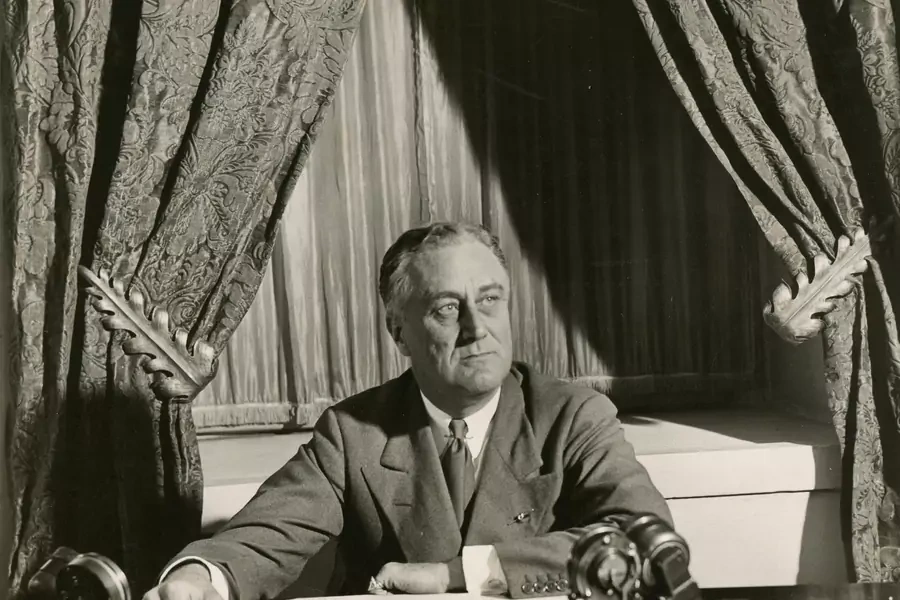TWE Remembers: FDR’s “Shoot-on-Sight” Fireside Chat

When most Americans think of World War II, the story starts on December 7, 1941, with the bombing of Pearl Harbor. But in fact the United States had been edging toward war with Germany for several months before Japanese Zeros screamed over the Hawaiian Islands, as President Franklin Roosevelt made clear with his “shoot-on-sight” Fireside Chat to the nation on September 11, 1941.
FDR’s speech was prompted by a clash a week earlier in the North Atlantic off the coast of Greenland when the USS Greer crossed paths with a German submarine. As Roosevelt told the country, “the German submarine fired first upon this American destroyer without warning, and with deliberate design to sink her.” The sub’s two torpedoes missed their mark. The Greer dropped depth charges that were equally ineffective, but the attack made it the first American ship to fire on a German vessel.
Roosevelt saw the clash in the North Atlantic as an opportunity to move American public opinion further against Germany under the guise of ensuring the freedom of the seas, a bedrock principle of American foreign policy. With the passage of the Lend-Lease Act in March 1941, the United States had moved more aggressively to support London against Berlin. In April, FDR had dispatched American troops to Greenland (with the permission of the Danish government, which controlled the island) to keep it out of German hands and to provide protection for convoys ferrying materiel to Great Britain. In July, he had gone a step further and dispatched American troops to Iceland (with the permission of the government in Reykjavik). With the attack on the Greer, Roosevelt imposed his shoot-on-sight policy, ordering the U.S. Navy to sink any German or Italian military vessels operating in what Washington deemed to be America’s defensive maritime zones:
Let this warning be clear. From now on, if German or Italian vessels enter the waters, the protection of which is necessary for American defense, they do so at their own peril… When you see a rattlesnake poised to strike, you do not wait until he has struck before you crush him. These Nazi submarines and raiders are the rattlesnakes of the Atlantic.
More on:
FDR’s decision to impose a shoot-on-sight order largely met with public approval. (Ironically, FDR’s Fireside Chat was broadcast to the 8,000 people waiting in the Des Moines Coliseum to hear Charles Lindbergh make the case at an America First Committee event for keeping the United States out of the war in Europe. FDR’s impassioned speech no doubt contributed to the many boos that Lindbergh heard when he took the stage, though what he had to say would quickly rival the Fireside Chat for news headlines.) FDR had artfully presented his case for a forward-leaning policy, and the public followed.
In retrospect, however, the attack on the Greer had not unfolded as FDR claimed. Rather than being the victim of a surprise attack by the German sub:
The Greer had deliberately stalked the German sub, having been alerted to its presence by a British plane. The British plane had attacked the U-boat with depth charges while the Greer continued in pursuit. The sub fired a few torpedoes, the Greer responded with a few depth charges, and the chase came to an uneventful end. There was no positive evidence, the navy told the president, that the sub knew the nationality of the ship at which it was firing.
Another naval clash a quarter of a century later would similarly help move the United States to war. As the facts of the Gulf of Tonkin incident also turned out to be different than what the president said at the time, Senator J. William Fulbright would remark, “Roosevelt’s deviousness in a good cause made it easier for Lyndon Johnson to practice the same kind of deviousness in a bad cause.”
More on:
 Online Store
Online Store